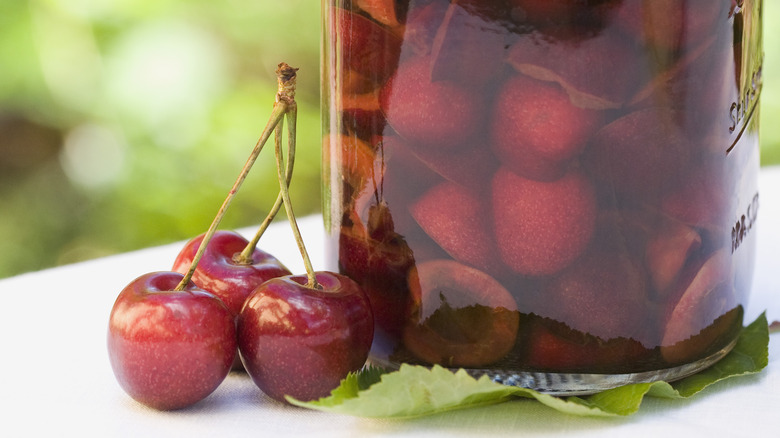The Crucial Flavor Difference In Jarred Vs. Canned Sour Cherries
Because of their relatively high sugar content, sweet cherries tend to be eaten right after picking – who doesn't love sliced sweet cherries in their fruit salad or processed for juice? By contrast, sour cherries are tart because of their higher acid content. While they can be eaten fresh, we tend to see sour cherries more often preserved in jars and cans. Since fresh cherries don't last as long as other fruits like blueberries or strawberries, sour cherries are preferred for baking applications.
When it's time to make a cherry tart or pie, is there a difference between canned and jarred cherries? What kind of preservation method should you be looking for? As a general rule of thumb, store-bought sour cherries kept in a jar with juice or water have a better taste than canned cherries because of their shortened processing time. Because they're cooked less, jarred sour cherries retain much of their tart bite, which provides a stronger flavor that you'll want to retain, particularly when making cherry-based desserts.
Preserve the tartness
Many cherry pie recipes call for adding salt or lemon juice to balance the sweetness of the preserved fruit, but buying minimally-processed sour cherries that retain their natural tartness can also help in this regard. That way, you're in control of not only the quantity of sugar you're adding to the filling, but the quality.
The bottom line is to use cherries that will help you retain the kind of sugar-to-acid ratio that's so vital for good baking. We've all had fruit pies with that single note of cloying sweetness; no matter how big your sweet tooth is, a pie that balances that sweetness with tartness will create a more complex and all-around better dessert. Pursuant to that, look for sour cherries stored in a jar with water or juice, avoid other acidic additives like lemon juice, and use judgment when adding sugar. The result will be a complex and authentic representation of a magical but short-lived summer fruit.

